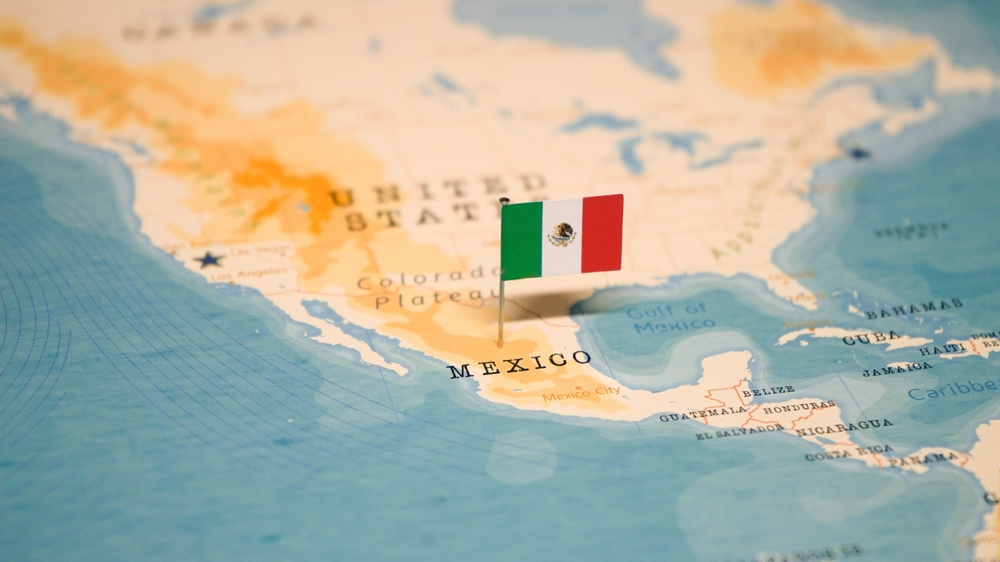10 Vibrant Facts You Didn’t Know About Mexico

Welcome to our exploration of “10 Vibrant Facts You Didn’t Know About Mexico,” a blog post designed to take you on a colorful voyage through the rich tapestry of Mexican culture, history, and natural wonders.
Mexico is a country that dances to its own rhythm, steeped in a history that dates back to ancient civilizations, and blessed with natural beauty that ranges from sun-kissed beaches to lush, mountainous terrains. Beyond its well-known culinary exports and vibrant festivals, Mexico has made significant contributions to global culture, science, and environmental conservation.
This post uncovers unique insights into a land where tradition meets innovation, and nature’s marvels inspire humanity’s creativity. Prepare to be surprised and enlightened as we uncover the lesser-known facets of Mexico’s global prominence and the colorful threads that weave its cultural, historical, and environmental mosaic.
Fact 1: The Origin of Chocolate
Discovering the sweet beginnings of chocolate takes us back to the ancient Mesoamericans of Mexico, who were the pioneers in transforming the bitter cacao bean into the chocolate we cherish today.
Far removed from the sugary treat that adorns store shelves around the world, the original chocolate was a rich, dark concoction brewed as a drink. Revered as the food of the gods, it played a significant role in both the culinary and ceremonial practices of civilizations such as the Aztecs and the Mayas.
These ancient peoples were the first to cultivate cacao trees, fermenting and roasting the beans, then grinding them into a paste—an artful process that laid the groundwork for chocolate’s evolution.
This indulgence of the gods was believed to confer strength and vigor, a belief that underscores the profound cultural importance of chocolate in Mesoamerican civilization.
This ancestral legacy, a testament to innovation and reverence for nature, marks the beginning of chocolate’s fascinating journey from a sacred potion to a global confectionery delight.
Fact 2: The World’s Smallest Volcano
Turning our attention to an astonishing geological spectacle, we encounter the Cuexcomate volcano in Puebla, officially recognized as the world’s smallest volcano.
Measuring a mere 13 meters in height, with a stairwell leading to its 8-meter wide crater, Cuexcomate might seem modest compared to its towering brethren.
Yet, its small stature belies its historical and scientific significance. Originating from an eruption in 1064, this diminutive volcano is often referred to as a “dead” or “extinct” volcano, offering a unique, accessible glimpse into volcanic structures.
Unlike the dramatic eruptions associated with larger volcanoes, Cuexcomate serves as a peaceful reminder of Earth’s fiery forces, nestled in the heart of Puebla’s urban landscape.
This geological curiosity not only captivates those interested in the Earth’s volcanic activity but also attracts visitors intrigued by the notion of standing at the rim of the world’s smallest volcano, making it a notable point of interest in Mexico’s diverse tapestry of natural wonders.
Fact 3: Meteorite History
Descending into the depths of Mexico’s Yucatán Peninsula, we uncover the remnants of a cataclysmic event that once reshaped life on Earth—the Chicxulub crater.
This colossal imprint, measuring about 150 kilometers in diameter, stands as a stark witness to the meteorite impact believed to have precipitated the mass extinction event that obliterated the dinosaurs around 65 million years ago.
The crater, mostly buried under limestone sediments, was discovered through geophysical surveys in the late 20th century, offering groundbreaking evidence of the impact’s magnitude and its global environmental consequences.
This historical scar not only fascinates geologists and paleontologists but also captivates anyone intrigued by Earth’s dynamic history.
The Chicxulub crater’s discovery has propelled it to a pivotal position in the study of planetary science, illustrating the catastrophic yet transformative forces that have shaped our planet’s biological and geological evolution.
Fact 4: Biodiversity Hotspot
Mexico’s standing as a biodiversity hotspot is a testament to its extraordinary range of life, ranking it among the world’s most biodiverse nations. This environmental treasure houses an impressive array of flora and fauna, many of which are endemic, meaning they are found nowhere else on Earth.
From the lush rainforests of Chiapas and Oaxaca that provide sanctuary to countless species of birds, insects, and mammals, to the stark beauty of the Sonoran Desert, home to unique cacti and wildlife, Mexico’s diverse ecosystems foster remarkable biodiversity.
This rich tapestry of life includes over 200,000 different species, making Mexico a critical area for conservation efforts and a fascinating destination for those seeking to immerse themselves in the wonders of the natural world.
The country’s commitment to preserving its natural heritage is evident in its numerous protected areas and reserves, safeguarding these vital ecosystems for future generations to marvel at and study.
Fact 5: The Largest Pyramid
introduces us to another of Mexico’s awe-inspiring contributions to the world’s architectural marvels – the Great Pyramid of Cholula, recognized as the world’s largest pyramid by volume. Nestled in the state of Puebla, this colossal structure signifies the grandeur of pre-Columbian architecture and the intricate societies that once flourished in the region.
Unlike the famous pyramids of Egypt, which reach towards the sky with their pointed summits, the Great Pyramid of Cholula, also known as Tlachihualtepetl, surprises many with its vast, mound-like appearance, covered in vegetation.
Its base covers an area of 400 by 400 meters (approximately 1,300 by 1,300 feet), and it stands at a height of 66 meters (approximately 217 feet).
Beneath its surface lies a complex network of tunnels extending for over 8 kilometers (about 5 miles), revealing the pyramid’s multiple layers and phases of construction extended over centuries.
The Great Pyramid of Cholula serves not just as a testament to the architectural prowess of ancient Mesoamerican civilizations but also as a beacon of cultural continuity, encapsulating centuries of religious and communal activities that have taken place at this sacred site.
Fact 6: A Country of Festivals
Mexico is a country where the calendar is dotted with a plethora of vibrant festivals, each a colorful mosaic of tradition and celebration.
Amidst these, Dia de los Muertos (Day of the Dead) and the Guelaguetza stand out as brilliant exemplars of Mexico’s rich cultural tapestry. Dia de los Muertos, celebrated from October 31st to November 2nd, transcends beyond mere remembrance of the departed.
It is a uniquely Mexican amalgamation of indigenous beliefs and Catholic traditions, where families create altars adorned with marigolds, sugar skulls, and offerings to welcome the spirits home.
On the other hand, Guelaguetza, held in Oaxaca, is a festival of indigenous culture, showcasing the diverse heritage of the region through dance, music, and traditional attire.
This event, usually taking place in July, is a vibrant testament to the communal spirit, offering a glimpse into the rich tapestry of Oaxaca’s indigenous communities. Both festivals, though wildly different in their origins and customs, embody the spirit of Mexican festivity— a lively celebration of life, death, and community.
Fact 7: Birthplace of the Color Television
In the annals of technological innovation, Mexico has carved out an indelible mark through the genius of Guillermo González Camarena, a visionary inventor who played a crucial role in the evolution of color television.
Born on February 17, 1917, in Guadalajara, Jalisco, González Camarena’s fascination with electronics and mechanical systems blossomed at an early age, setting the stage for his groundbreaking contributions.
His invention of a color television system in the early 1940s, known as the “Chromoscopic adapter for television equipment,” was a monumental leap forward, enabling the broadcasting of television in color.
González Camarena’s system was one of the first patented methods for color television broadcasting, and his pioneering work laid the foundation for the vivid, multi-hued television viewing experience we take for granted today.
Celebrated as a national hero, his legacy is a testament to the profound impact of Mexican ingenuity on global technology, underscoring the country’s role in the birthplace of color television.
Fact 8: Monarch Butterfly Migration
One of the most breathtaking natural phenomena witnessed in Mexico is the annual migration of monarch butterflies.
Each year, these ethereal creatures undertake an epic journey from the cooler regions of Canada and the United States to the warmer climes of Michoacán state in Mexico, covering thousands of miles.
This incredible migration is not only a testament to nature’s resilience but also to the intricate ecological balance that sustains our planet.
The monarchs’ arrival in Mexico coincides with the onset of the winter period, where they find refuge in the Oyamel fir forests, cloaking the trees in a vibrant tapestry of orange and black. The sight of millions of butterflies, clustering together for warmth, is a spectacle that draws nature lovers and researchers from across the globe.
This migration, marked by its precision and the sheer number of participating butterflies, highlights the monarchs’ critical need for conservation efforts across their migratory path to ensure this miraculous journey continues for generations to come.
Fact 9: UNESCO World Heritage Sites
Mexico’s treasure trove of UNESCO World Heritage Sites encapsulates the country’s rich tapestry of cultural history and natural beauty, drawing visitors from around the world to its storied locales.
Among these, the pre-Columbian city of Chichen Itza on the Yucatan Peninsula stands as a testament to the architectural genius and astronomical precision of the Mayan civilization, with the iconic pyramid of El Castillo dominating its landscape.
Equally captivating, the historic centre of Oaxaca and archaeological site of Monte Albán offer a glimpse into the Zapotec and Mixtec cultures, showcasing a blend of indigenous and colonial influences.
Not to be overlooked, Mexico’s natural wonders are also recognized, with the Whale Sanctuary of El Vizcaino and the Sian Ka’an Biosphere Reserve highlighting the country’s commitment to conservation.
These sites, among others, underscore Mexico’s diverse heritage, serving as enduring symbols of the nation’s ability to safeguard the echoes of its ancient past while celebrating its natural splendors.
Fact 10: The Oldest University in North America
The rich educational heritage of Mexico is epitomized by the National University of Mexico (Universidad Nacional Autónoma de México – UNAM), founded on September 21, 1551. Holding the prestigious title of the oldest university in North America, its establishment marks a significant milestone in the history of higher education on the continent.
The university initially focused on providing classical education based on the curriculum of European institutions of the time. Through the centuries, it has evolved into a comprehensive research university, embodying a deep dedication to academic excellence, freedom, and social responsibility.
Today, UNAM stands not only as a beacon of learning and culture but also as a testament to Mexico’s enduring legacy of scholarly pursuit, continually contributing to the intellectual and social fabric of the nation and beyond.
Conclusion
In conclusion, Mexico’s colorful tapestry weaves together a unique blend of rich history, groundbreaking innovation, and breathtaking natural wonders, far surpassing the common stereotypes and expectations many hold.
From the spiritual richness embodied in traditions like Dia de los Muertos and the Guelaguetza to the country’s pivotal role in technological advancements such as the invention of color television, Mexico demonstrates a profound depth of cultural and scientific heritage.
The annual migration of monarch butterflies and the preservation of ancient sites and natural habitats further highlight Mexico’s dedication to celebrating and protecting the natural world.
Mexico’s educational institutions, especially the storied National University of Mexico, underscore the nation’s commitment to intellectual achievement and social responsibility.
Each fact shared about Mexico is an invitation to look beyond the surface—to explore, learn, and immerse oneself in the myriad experiences this country offers. We encourage our readers to go beyond the known narratives and uncover the vibrant, often untold stories of Mexico.
There is much to discover about this enchanting land, where history, nature, and innovation dance together in a celebration of life itself.




